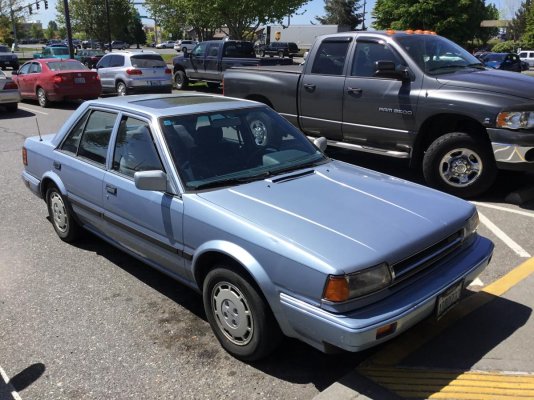Often the glazing is not really wear on the liner, but the hone grooves get packed with carbon. Oil control gets sloppy. Often a good hard run will burn the carbon out of the grooves and all is well. An hour or so at 75% should do it.
A 2liter engine at 1800 and making 40hp is not going to have a glazing problem. Even at 20hp at 1800 it will be fine.
It can be a real problem on gennies that run all night and all day at almost zero load at 1800, day after day.
But the issue still is rare. Running a Yanmar JH at hull speed is NOT going to have this problem.
Still good to run it hard once a day. But no need to go to full power, 75% should be fine. Even 50% should clean it up.
CD, don't worry about this.
Since what I wrote the article that started this I'll chime in.
Tony Athens, a man for whom I have great respect, and I have a difference of opinion on under loading, it may be a result of the engines we see, I suspect many of the ones he works on, because of the coastline and lack of protected waters, are run hard and are commercial, most of my work is with displacement vessels, recreational, that are over-powered and operate often in sheltered waters on the East Coast and PNW.
I have seen engines suffering, if not dying, from the effects of under loading, there are photos of them in the article, generators in particular, especially when used to charge batteries, sometimes running at 10% load. I often go aboard new boats that are being commissioned and in many cases the genset is running, it's powering some lights and little else if it's not in a very warm or cold climate. I look at the hour meter and it has 50 or 60 hours on it, running like this, it's a great way to improperly break in a genset.
https://stevedmarineconsulting.com/properly-breaking-in-your-generator-and-why-this-is-important-2/
I also agree that WOT is wholly unnecessary to properly load an engine periodically, running it hard enough to raise oil temp above 180F is one of the goals.
Ski you are very right to point out the that glazing isn't wear, it's a filling in of the cross hatch.
Glazing refers to the appearance, which is smooth, and shiny, ice-like, however, a coating or “filler” of sorts does form. The actual process is broken down into two sub-groups, glazing and polishing (some call it burnishing). In the former, combustion byproducts, as well and oil and fuel, combine and oxidize to fill in the valleys between or grooves in the cross hatch pattern, creating the smooth finish. The effect is usually uniform and it sometimes has a yellowish appearance.
In the latter, carbon deposits on the rings and piston ring lands prevent the rings from floating, and self-adjusting during piston movement, as well as inhibiting expansion and contraction during heating cycles. This leads to excessive and uneven pressure being placed against the cylinder wall by the seized ring, which leads to wear (as opposed to the deposits in the case of glazing). The effect is often localized vertically on one region of the cylinder wall.
The terms are often used interchangeably, and I confess I’m guilty of this, strictly speaking, however, they are different.


